Future Tech Journalism: Results of a two-day bootcamp for journalists from Seeds of Bravery
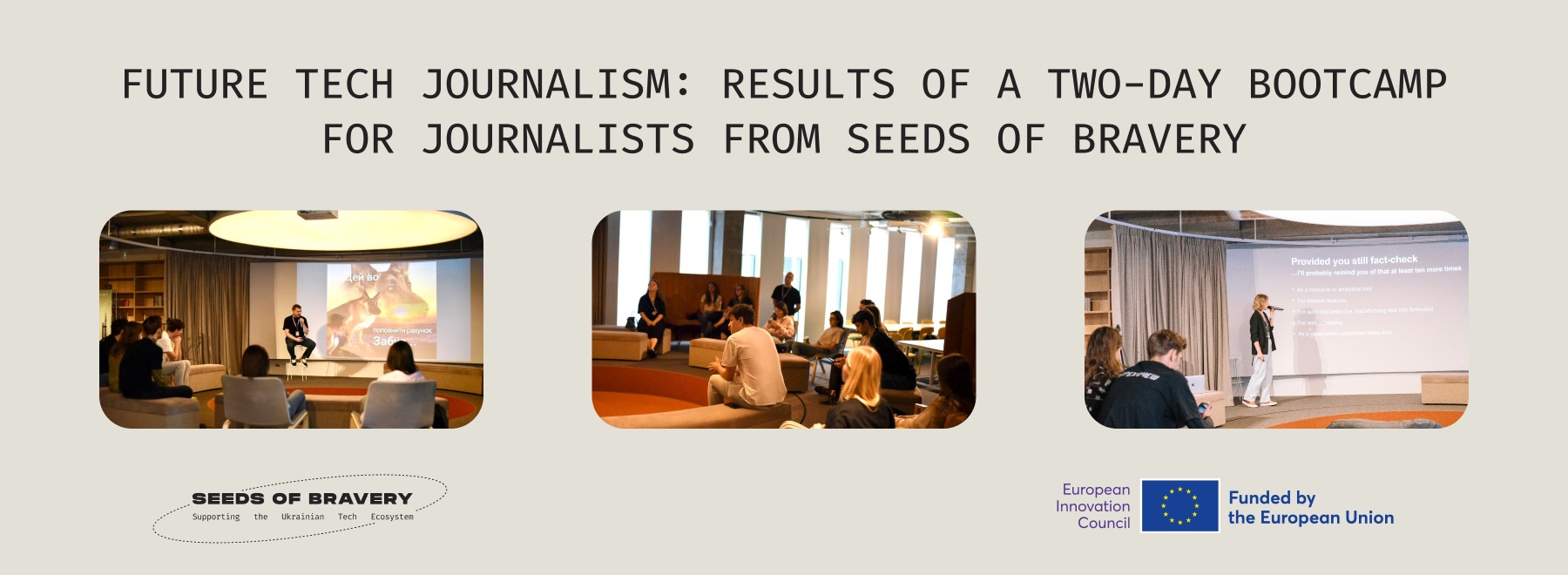
On 7-8 September, the Seeds of Bravery project hosted a bootcamp for journalists, which has become a landmark event for media development in Ukraine. The event brought together about 20 participants, including journalists, editors, media managers, PR managers and experts.
The bootcamp was unique in that it not only provided a platform for the exchange of knowledge and experience, but also offered practical opportunities to hone skills in the real conditions of modern journalism. The event also emphasised the importance of practical application of the knowledge gained. Participants did not just listen to advice from experts, but were able to apply this knowledge to real-life cases immediately. It helped to test the effectiveness of new methods and tools and motivate them to implement them in their daily work, improving the quality of journalistic materials.
What an online media journalist should be able to do
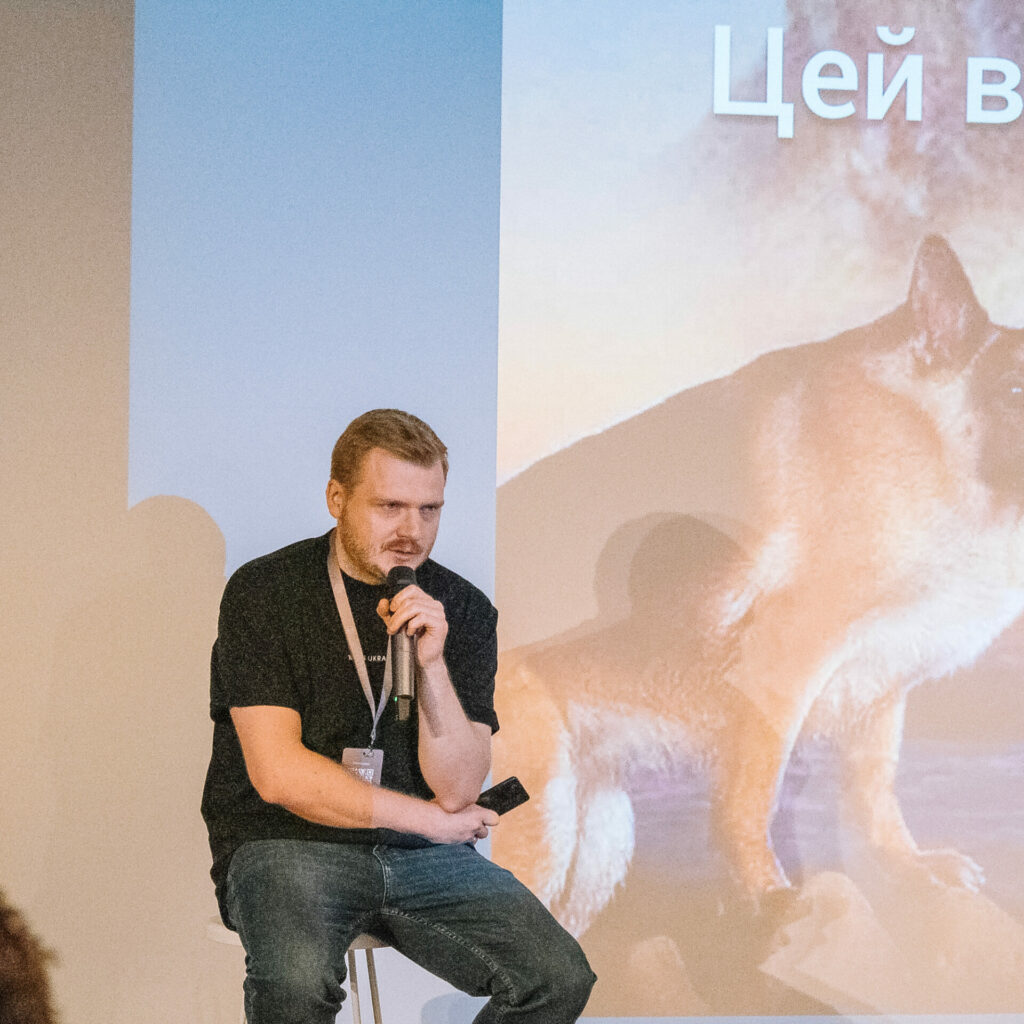
The first speaker was Viktor Kishchak, Head of Digital at Forbes, who spoke on the topic ‘What should an online journalist be able to do?’. Victor focused on the key role of constant practice in the development of journalistic skills: ‘To become a journalist, you need to write a lot.’ However, according to him, it is equally important to choose the right specialisation. Only a deep understanding of their topic allows a journalist to create high-quality and interesting content that attracts the attention of the audience.
Viktor also emphasised the importance of participation in the professional community. He emphasised the need to actively engage in discussions, attend professional events and look for exclusive angles that have not yet been covered by the media. This, in his opinion, will allow a journalist to stand out among competitors and gain recognition in the industry.
Changing trends in news consumption and the role of social media
Vira Voron from Creators Media Group spoke about new trends in news consumption and drew attention to the fact that platforms such as Facebook are no longer as effective in attracting a large audience. She noted that developing a personal brand is becoming increasingly important for journalists and media managers. According to her, the content should be ‘pop’, meaning interesting to the general public, and journalists should remain open to the opinions of different people, as this helps to create a community. Vera also stressed that social media is gradually losing its ability to engage audiences on a large scale, and it is important to look for new channels for communication.
Mastering the art of tech interviewing
Andrii Degeler, editor of TNW, shared his advice on mastering the art of tech interviews. He emphasised that the success of an interview largely depends on the journalist’s thorough preparation. This includes reviewing the guest’s previous speeches, including lesser-known ones, which may be the exclusive material the interviewer is looking for. It is also important to familiarise yourself with the topics of interest to the guest and pay attention to aspects that have not yet been covered.
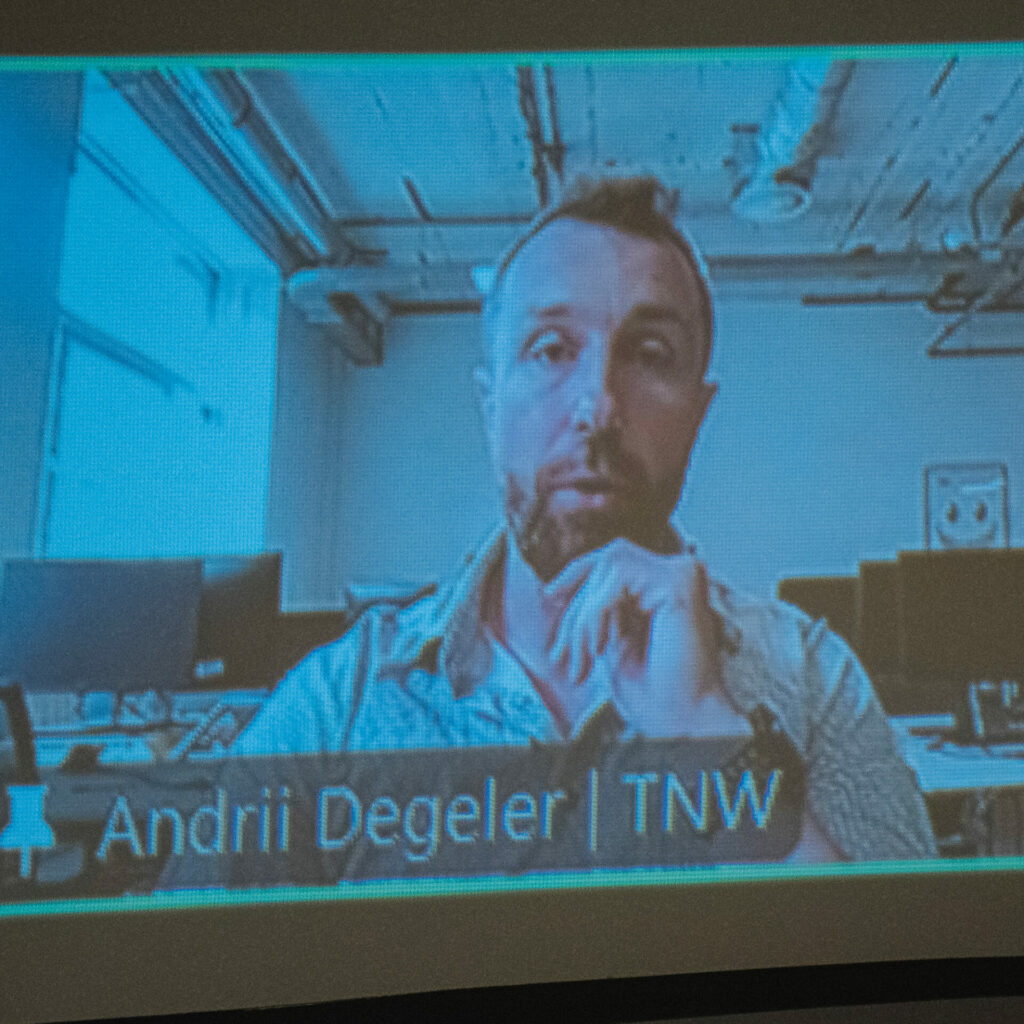
Andriy emphasised the importance of using the terminology used by the guest to create an atmosphere of mutual understanding and to be “on the same page”. This helps to get deeper and more meaningful answers, revealing the topic on a new level. He also noted that some guests may avoid certain questions, so it is worth discussing in advance which topics are taboo and off-limits to avoid awkward moments during the interview.
Technical journalism: new opportunities
Asya Artyushevska, Lead Editor of DOU.ua, spoke about developments in the field of technical journalism. She emphasised the importance of critical and analytical thinking, calling these qualities essential for the successful work of a technical journalist. According to her, the ability not only to understand complex technical topics but also to explain them in accessible language is a crucial factor in attracting a wide audience. This not only increases the level of interest among readers, but also helps to build the journalist’s credibility in the eyes of the professional community.
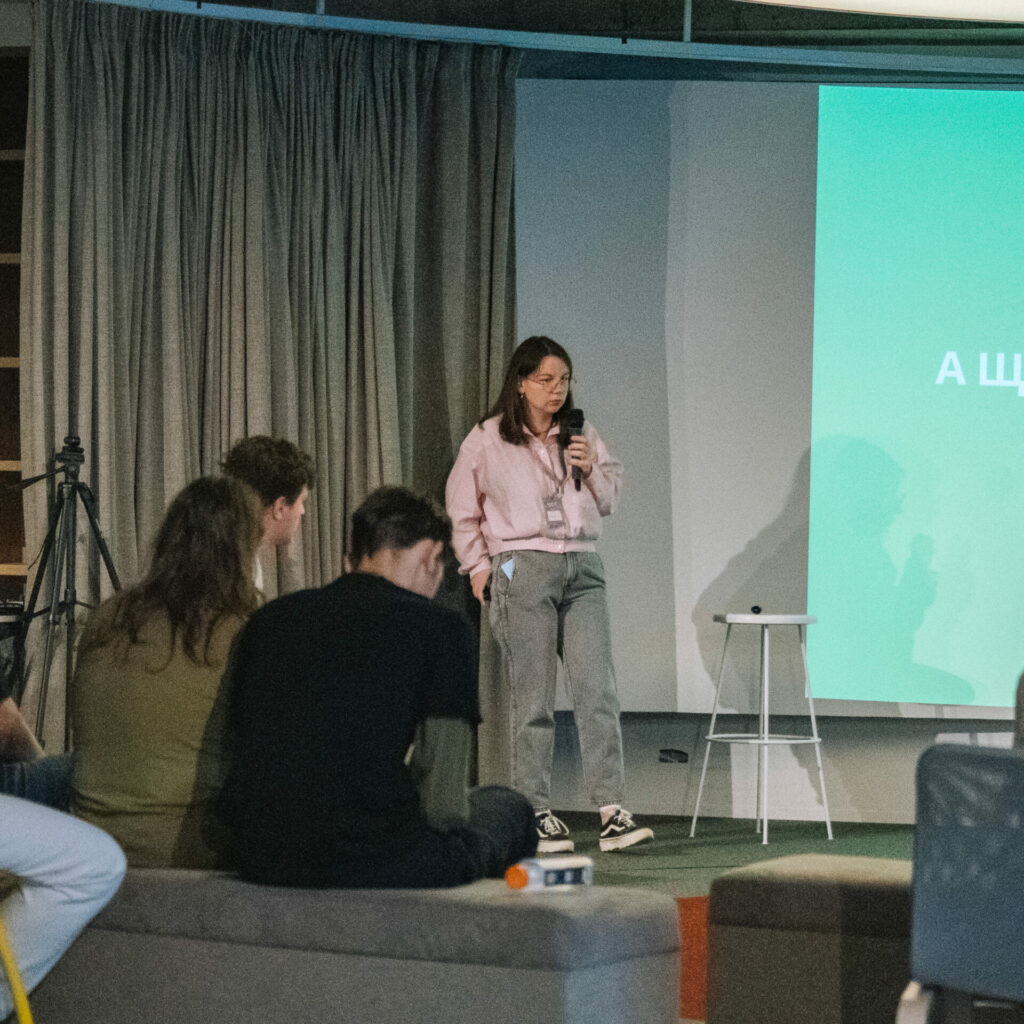
Asya emphasised that a tech journalist should be careful when choosing topics for their stories. She underlined that it is important to write only about topics in which the journalist has a good understanding to ensure the accuracy and reliability of the information provided. Working with trusted sources is also a prerequisite, as it helps to avoid spreading false information and maintain a reputation as a reliable author.
In addition, Asya noted that to become a successful tech journalist, it is not necessary to have a technical education. It is important to dive deeply into the specifics of the chosen topic and constantly improve your knowledge to stay at the forefront of technological trends. She highlighted that interest, willingness to learn new things and the ability to adapt are key components of success in this dynamic industry.
Ethical communication between PR professionals and journalists
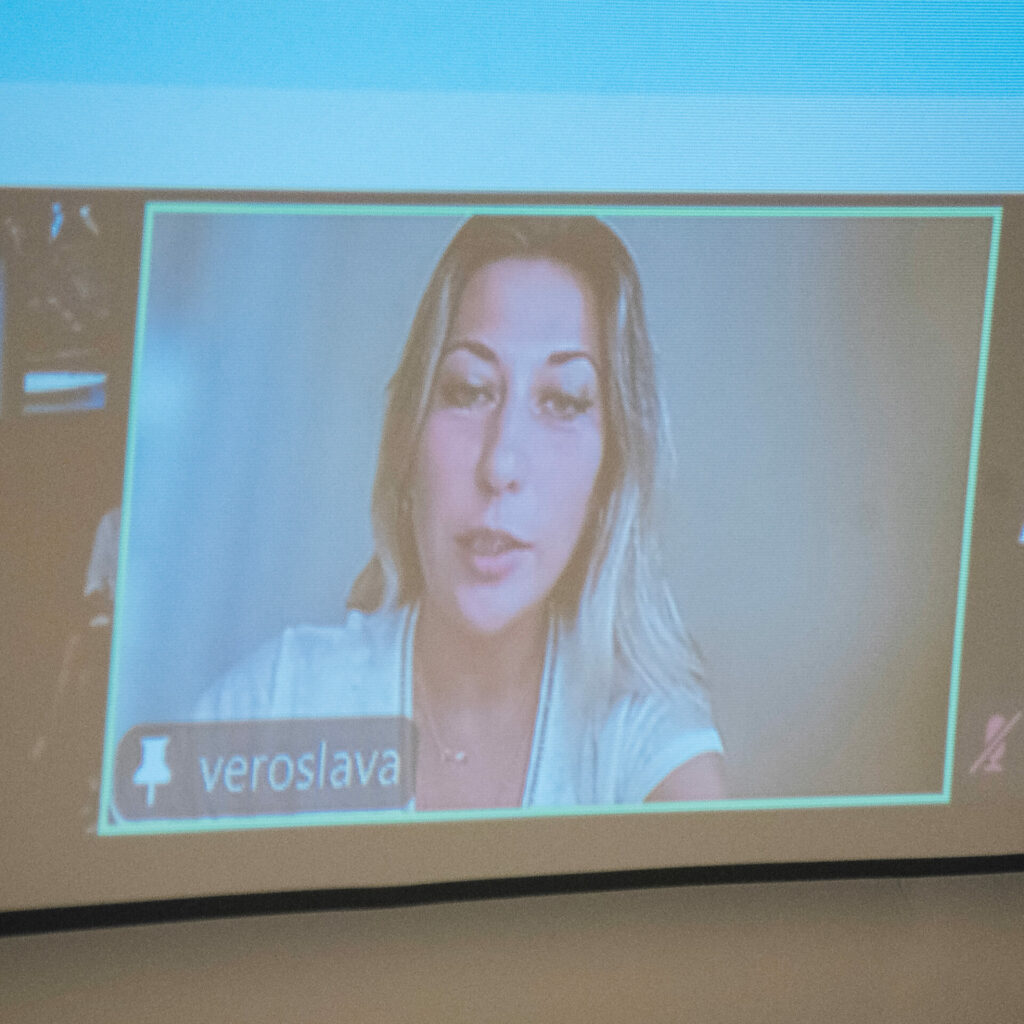
Viroslava Novosilna, CEO & Founder of Slova Tech PR, Co-founder of Wtech, shared important principles of building trust between PR professionals and journalists, drawing attention to key aspects of effective and ethical cooperation in the information space. She emphasised that a PR professional should act as a source of objective and useful advice, contributing to the formation of informed discussions and supporting their development. This, she said, is the basis for interaction based on mutual respect and trust.
Viroslava placed a special emphasis on the need to maintain the independence of a PR professional from the interests of the client. Such independence allows maintaining objectivity and avoiding manipulation. She warned that attempts to manipulate public opinion for the sake of commercial or other interests are not only wrong, but also dangerous. Such actions can undermine the credibility of a journalist and harm the PR professional, which can ultimately lead to the destruction of the reputation of both parties.
According to Novosilna, ethical communication should be based on the principles of openness, honesty and transparency. She emphasised that building partnerships between journalists and PR professionals is a complex process that requires a commitment to mutual understanding and working in the public interest. Only this approach can ensure long-term cooperation based on trust and respect.
The usage of artificial intelligence in journalism
Martyna Majchrzak, Managing Director of Verticals w Ringier Axel Springer, Poland, spoke about new trends in the use of artificial intelligence in the media. She noted that AI is already actively transforming approaches to content creation, in particular, it significantly speeds up the processes of translation and analysis of large volumes of articles. Artificial intelligence greatly facilitates the routine tasks of journalists, allowing them to focus on the creative and strategic aspects of their work. At the same time, Martyna stressed that despite all the advantages of technology, verifying the accuracy of information obtained through AI remains critical. Automated systems can make mistakes, so human control is still an integral part of the process.
Martyna paid particular attention to the rapidly growing popularity of vertical videos among young audiences. She emphasised that this content format is becoming increasingly popular due to its ability to quickly grab users’ attention and convey key messages in a short time. According to Martyna, vertical videos are particularly well received by young people who are active on social platforms such as TikTok and Instagram.
Practical skills during workshops
Data journalism and AI
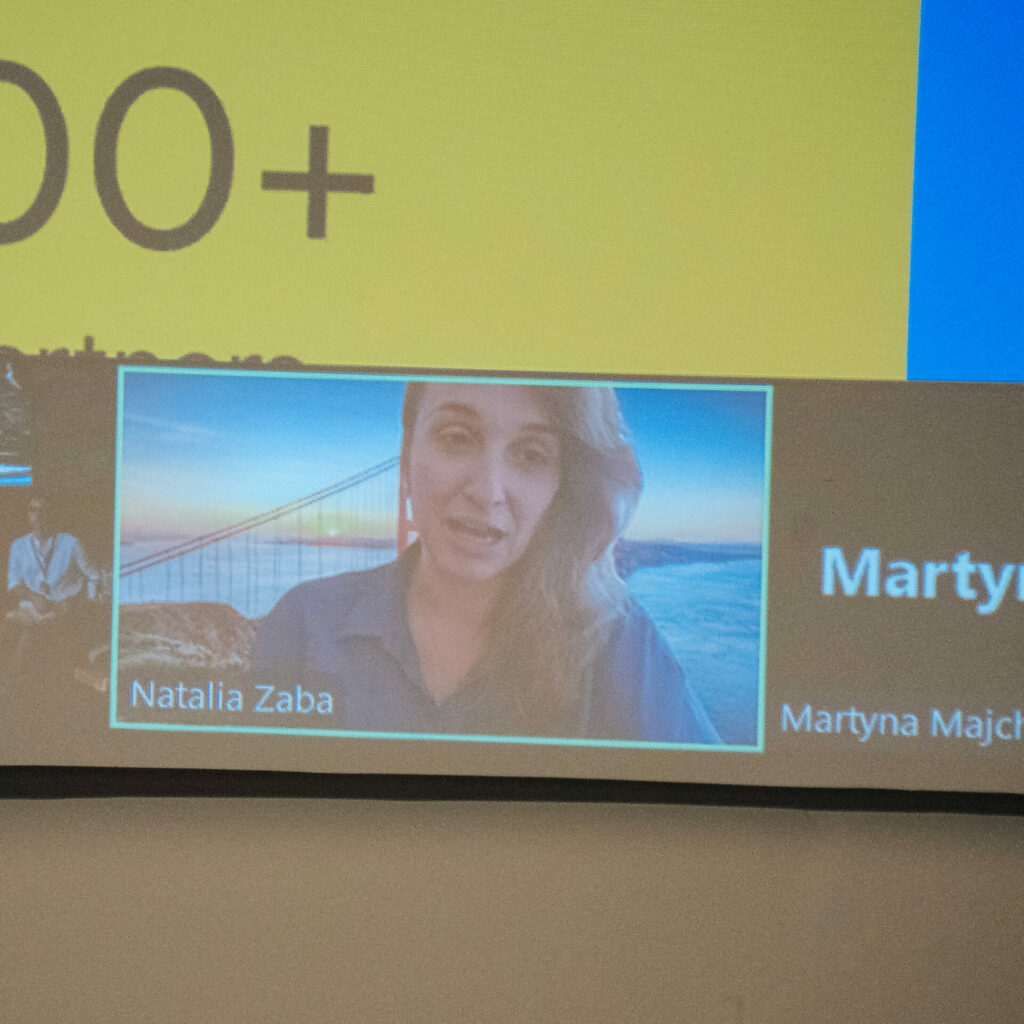
Natalia Zaba, Google Teaching Fellow for Central and Eastern Europe, presented Pinpoint, a powerful document analysis tool that is actively used in journalism today. She noted that this tool is becoming an indispensable assistant, especially when it comes to processing large amounts of information in a limited time frame, which would be almost impossible to do using traditional methods.
During the workshop, Natalia demonstrated one of the key cases – the analysis of an array of 60,000 files containing phone records of a well-known Polish coach and members of a criminal organisation. Thanks to Pinpoint, journalists were able to process this data quickly and efficiently, identify important details and structure the information for further investigation. This case clearly illustrates how modern digital tools simplify complex investigative journalism, saving time and effort.
How to prepare for tech interviews
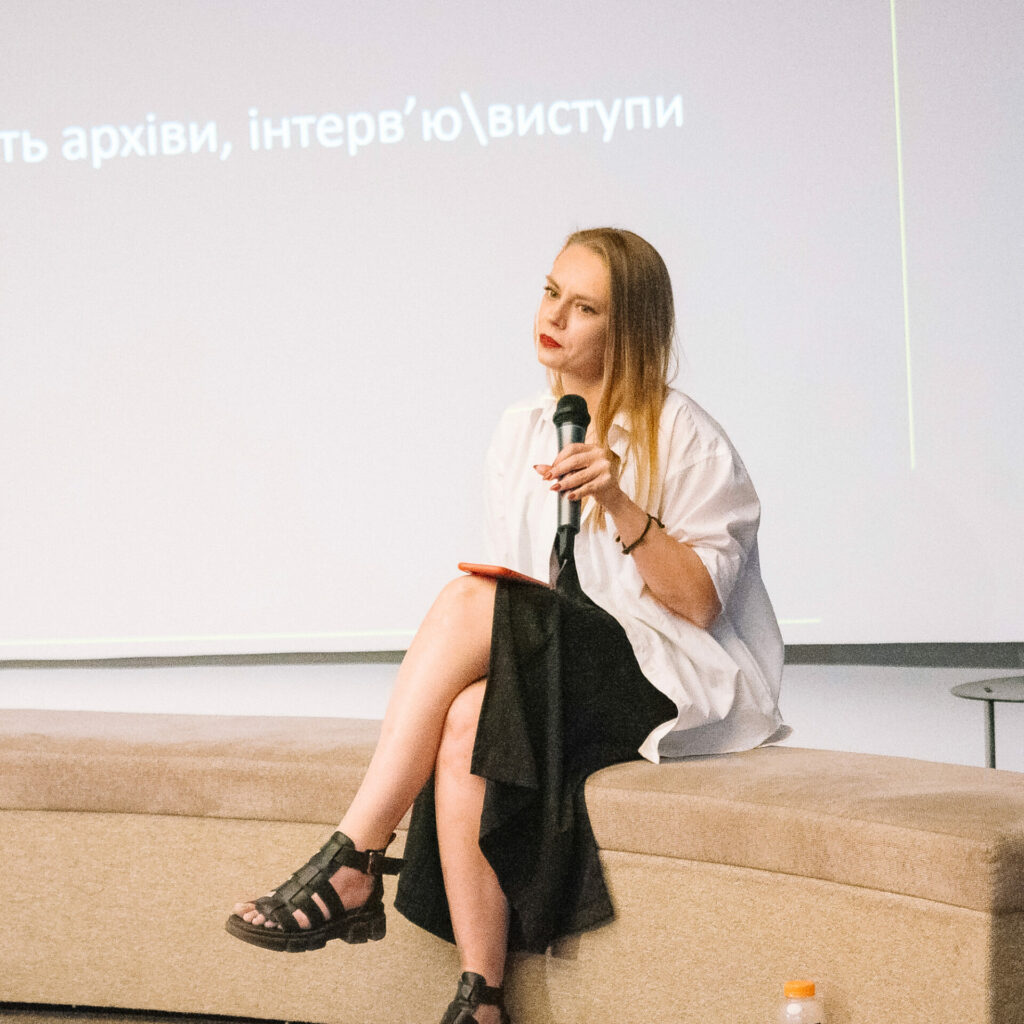
Valentyna Dudko, Startup and Venture Capital Editor at Forbes Ukraine, emphasised the importance of thorough preparation before an interview, especially when your interlocutor is a controversial and complex personality, such as Elon Musk.
Valentyna stressed that a successful interview requires not only knowledge of current events, but also an in-depth analysis of the interlocutor’s previous statements and actions. Researching archives, studying past interviews and public speeches are key stages of preparation to avoid trivial or already discussed topics.
Valentyna noted that a journalist should clearly define the objectives of the interview and focus on the most important aspects, as time for communication can often be limited. The speaker emphasised that clearly formulated questions are essential in order to get a deeper insight into the topic and get informative answers.
Dudko also drew attention to the fact that vague questions are a taboo for any professional journalist. Such questions only distract from the essence and do not allow for clear and meaningful answers. They can confuse both the interviewer and his guest, which reduces the informative value of the conversation. Instead, Valentyna advised asking specific questions that require detailed answers, encouraging the interviewee to share interesting details that might otherwise be overlooked.
Secrets of technical storytelling

Yelyzaveta Bordunova, editor-in-chief of Vector media, emphasised that effective storytelling is a real art that requires special skills and a deep understanding of the process. Yelyzaveta noted that it is important for modern journalists not only to convey facts, but also to look for fascinating stories and bright personalities who can bring these facts to life, giving them meaning and emotional depth. Bordunova highlighted that it is almost impossible to turn an uninteresting topic into an exciting one, so the success of journalistic work largely depends on the ability to find topics that really attract attention and have the potential to interest a wide audience.
According to Yelyzaveta, one of the key stages in creating a quality story is the process of communicating with the guest. She emphasised that a journalist should not only be an active interviewer but also an attentive listener. Asking the right questions is only half the battle, as unexpected moments often arise during the conversation when the interviewee reveals thoughts or stories that go beyond the planned topics. It is these unexpected confessions or deep reflections that can greatly enrich the material, giving it new meanings and making it more lively and authentic.
Bordunova also draws attention to the importance of a balance between curiosity and accuracy in storytelling. She noted that a journalist should actively develop the conversation by asking questions that will help to reveal the topic in more depth. However, it is equally important to maintain a professional distance and adhere to the boundaries of correctness, as this directly affects the perception of the material by both the audience and the guest.
Journalism against disinformation
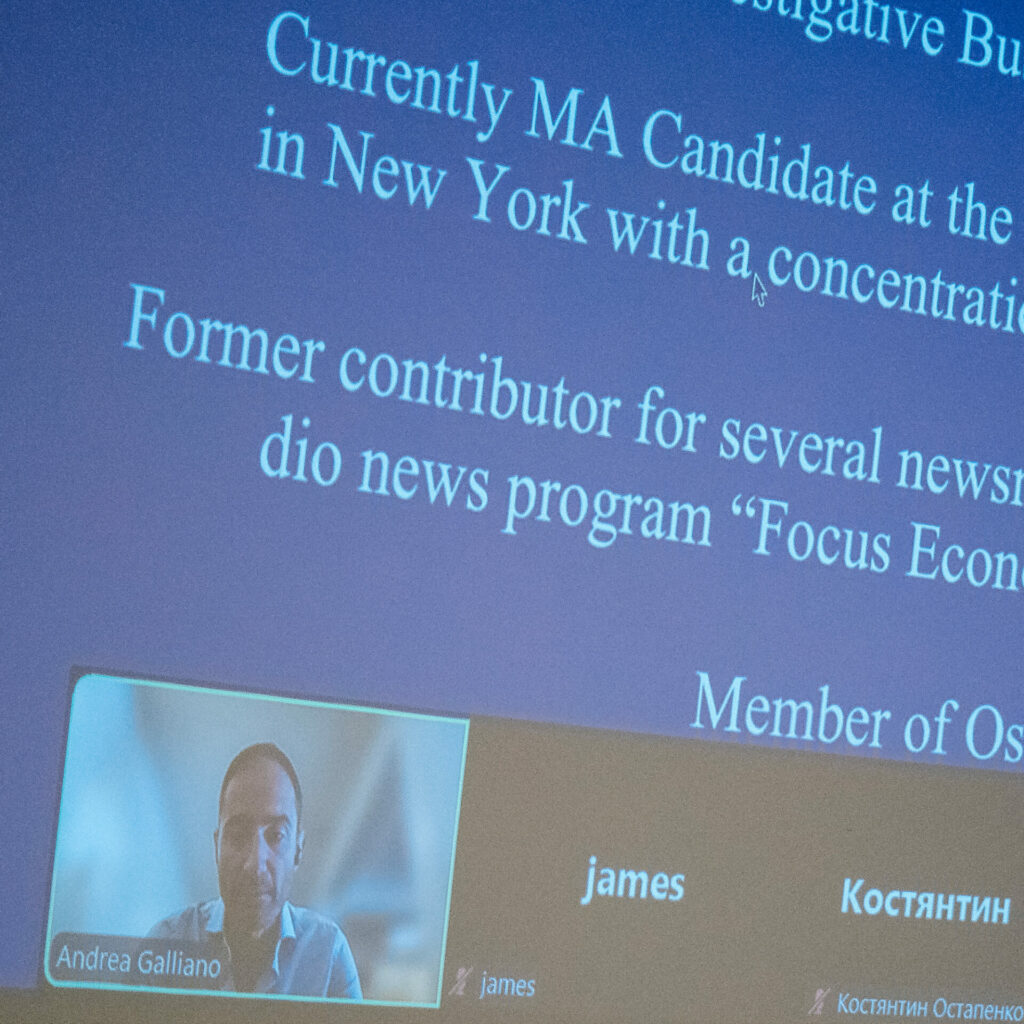
Andrea Galliano, a candidate at the Columbia Journalism School’s Master’s programme, spoke about one of the most pressing contemporary media issues – disinformation, which is becoming more and more widespread. He emphasised that in the face of ever-increasing information flows, journalists play a key role in combating false information. Galliano compared journalists to ‘digital Sherlocks’ who are engaged in fact-finding, analysing and thoroughly checking sources on a daily basis, making every effort to expose any form of manipulation. Among the key factors for verifying information, the speaker highlighted: fact-checking, different sources of information, geolocation and financial assets.
Andrea also presented and demonstrated the functionality of a number of resources that help in the fight against disinformation.
Data journalism and AI
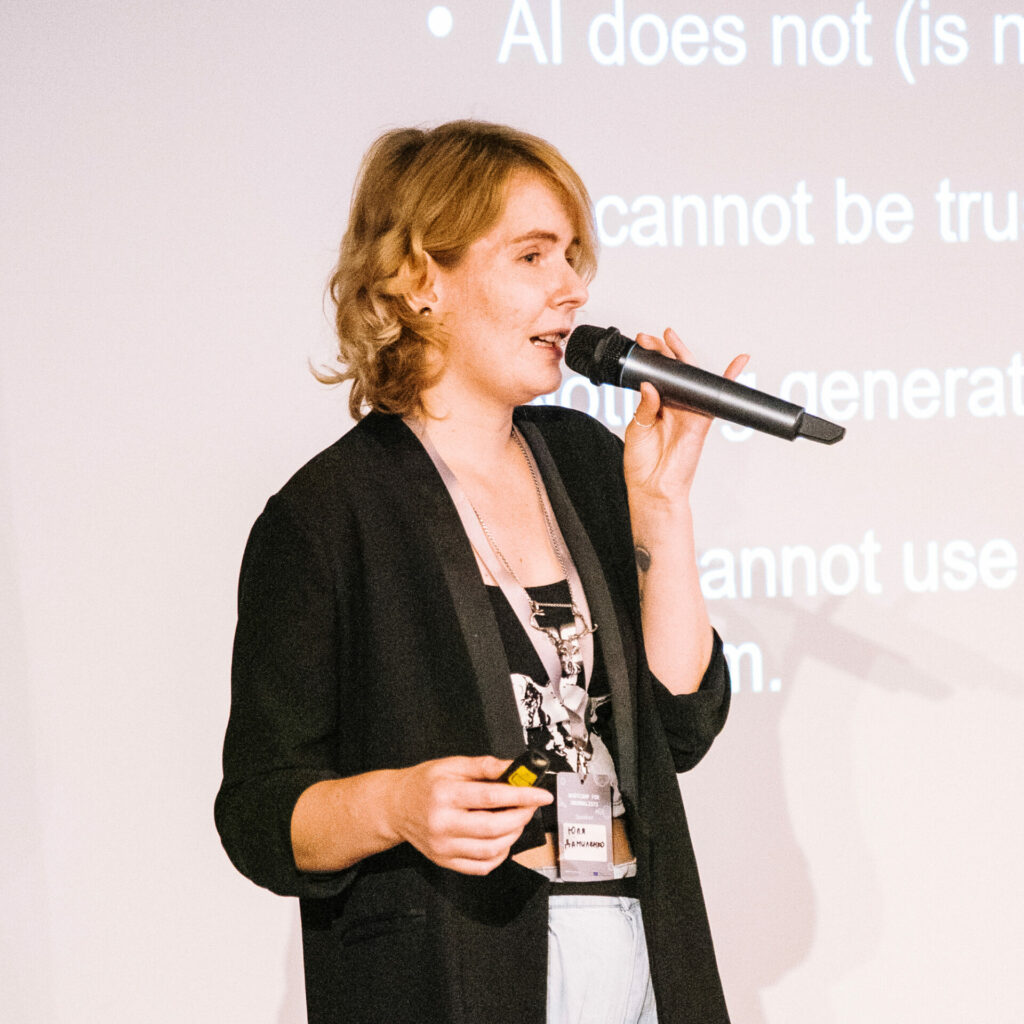
Yuliia Danylenko, Co-founder Meikanemo, emphasised the importance of a cautious approach to the use of artificial intelligence. She noted that we live in an era where AI is used almost everywhere. However, she gave an example of a company that experienced difficulties due to the incorrect use of this technology. Yulia warned that artificial intelligence is not able to think independently, it only speeds up and systemises processes, but cannot provide a perfect result.
Every fact generated by AI needs to be carefully checked, as technologies can be wrong. Artificial intelligence should not be used to solve tasks that you are not able to check for accuracy yourself, as this increases the risk of errors. Modern media should implement a clear policy on the use of AI. According to NICAR, artificial intelligence should not be used for illustrations and image generation, as well as when personal data is involved.
When using AI, a disclaimer must be provided. Artificial intelligence can be useful in cases where thorough fact-checking is provided. It should be used for analytics, data organisation, technical specifications, and research. Yulia also provided examples of AI-based applications that can be useful for these purposes. The main advantage of artificial intelligence is the ability to process large amounts of information that were previously inaccessible to humanity.
How to increase the reach of articles
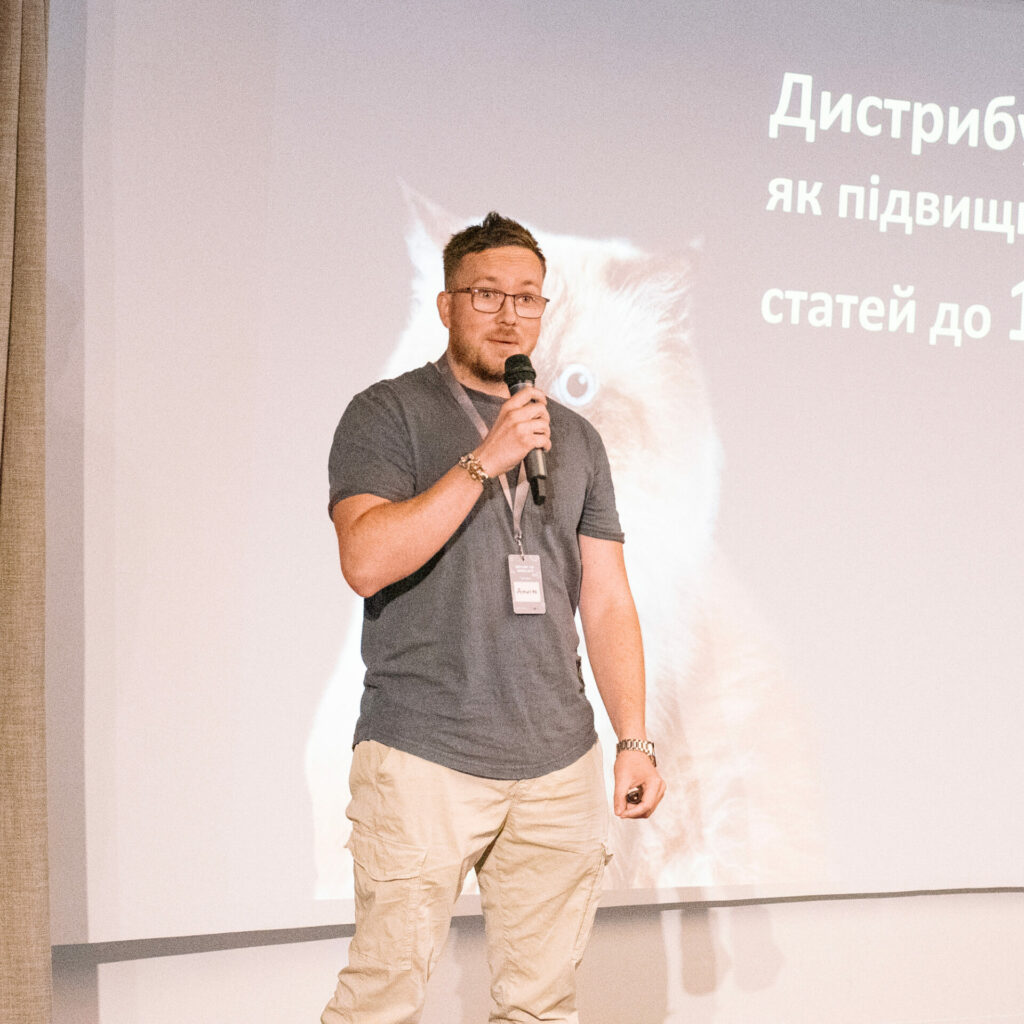
Dmytro Voloshyn, Co-founder of Creators Agency, CMO of Creators Media Group, shared his experience on the importance of SEO to increase the popularity of journalistic materials. He noted that a properly optimised article can significantly increase traffic to a website, allowing media resources to stand out in the face of growing competition in the digital space. Voloshin emphasised that the effective use of SEO strategies is a key success factor, where every detail can be crucial.
Dmytro also drew attention to the importance of high-quality headlines, which play a key role in attracting readers’ attention. He emphasised that headlines should not only be attractive, but also contain keywords that match the audience’s search queries, which increases the chances of an article getting to the top of search engines.
Voloshyn also focused on the structure of the text, noting that a logically constructed and well-designed article significantly improves the user experience. A clear structure, subheadings, lists, and highlighting of key points make the material more accessible and easy to understand.
Another important aspect that Dmitriy emphasised was the regular analysis of current topics and audience requests. Creating content that meets current trends and needs allows not only to attract a new audience, but also to keep the interest of regular readers. This gives journalists the opportunity to stay in the spotlight and create materials that resonate with the needs of society.
Data visualisation: the key to effective content
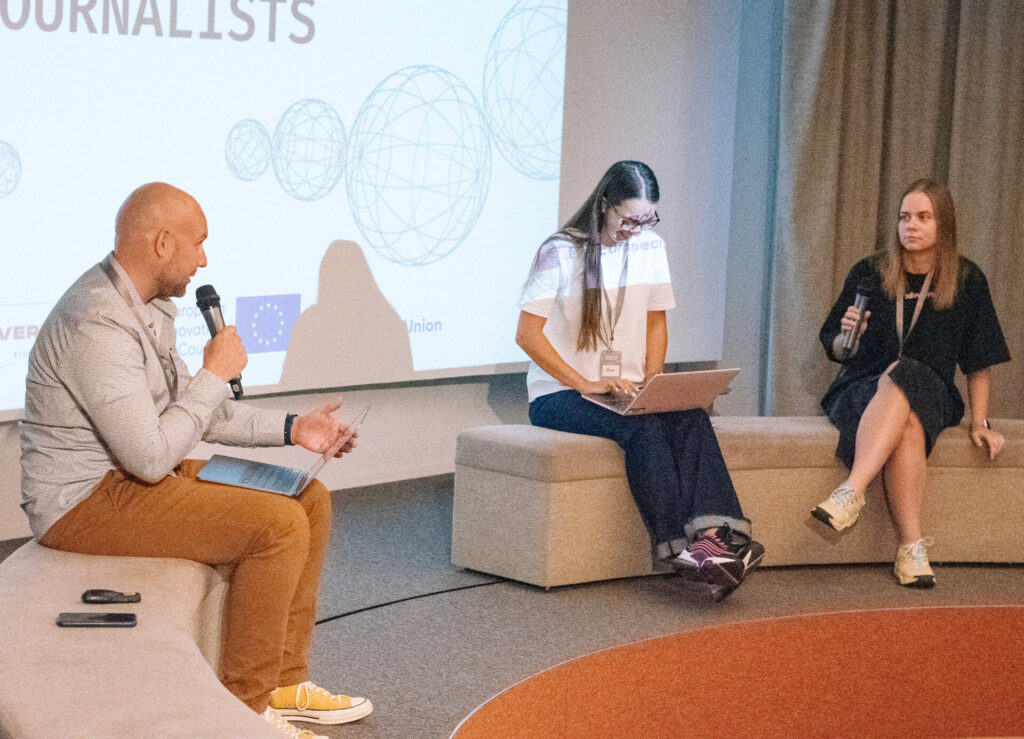
Polina Udod, art director at Idealers creative agency, head of design at VerbaApp, curator of the mobile app design course at Projector, and Kostiantyn Soloviov, founder of Soloviov Marketing Agency, gave a joint lecture on Data Visualisation and Technical Reporting – How to use data visualisation tools to improve articles about technology. They focused on the importance of visual content in modern media, emphasising that visualisation of information allows for a much faster and more efficient perception of it than textual materials.
Polina noted that 80% of the success of any visualisation depends on the quality of communication between the client and the designer. A clear understanding of tasks and needs is the key to creating effective visual content. She emphasised that a designer should not only be proficient in the tools, but also understand what the audience wants to see. Visuals should not only decorate the text, but also make it more understandable and easy to perceive.
Kostiantyn added that visual content is especially useful when covering technology topics that can be difficult for a wide audience. Graphs, diagrams and infographics make the material more accessible, increasing reader engagement and awareness of the topic.
Polina and Kostiantyn emphasised that the use of data visualisation tools can turn dry numbers and technical information into fascinating material that will be read easily and with interest. Thanks to visualisation, even the most complex concepts can be presented in an accessible form, which significantly increases the effectiveness of communication and the impact of technology articles.
Social media in news dissemination: what is happening today and what to expect in the future
Nadiia Balovsiak, associate professor at the UCU School of Journalism and Communications, PhD in Education, journalist, in her presentation on ‘Social Media in News Dissemination: What’s Happening Today and What to Expect in the Future’ presented statistics that highlight the main ways social media is used and its role in modern society. According to her, Facebook remains the most popular social media platform in the world, while Telegram is the leader in Ukraine. She also emphasised that since the beginning of the full-scale invasion, 35% of users have turned to social media to receive news. Ukrainians are most active on such platforms as TikTok, LinkedIn and Instagram.
Nadiia drew attention to the potential risks associated with the use of social media, including Adblock and the growing trend towards paid platforms. She highlighted the dependence of Ukrainian media on Telegram, emphasising: “Ukrainian media is dependent on Telegram”.
Analysing media and advertising campaigns
Kostiantyn Soloviov, founder of Soloviov Marketing Agency, shared important recommendations for creating compelling media content and monitoring it effectively. According to him, the key to successful promotion of any material is in-depth analysis and regular monitoring of coverage through various media channels, such as television, radio, online media and social networks.
Kostiantyn emphasised the importance of analysing the tone of publications to understand how the audience perceives your campaign. He recommends regularly assessing the ratio of positive, neutral and negative posts, which allows you to adjust your strategies based on public reactions.
Soloviov drew attention to the importance of determining the role of the topic you are promoting in the overall information flow. Understanding whether the topic is a major or minor one helps to prioritise the material and adjust its presentation depending on the circumstances.
Another important aspect, according to Kostiantyn, is to analyse the geographical distribution of your coverage, which allows you to identify where your campaign has the greatest impact and which regions should be more actively involved in your communication strategy.
Soloviov also emphasised the need to identify the most influential sources for your campaign, as they can significantly increase the impact of the message. Thanks to modern technologies such as dashboards, you can track the coverage, number of mentions and dynamics of reactions in real time, which allows you to respond quickly to changes and improve the strategy in the process of its implementation.
According to Kostiantyn Soloviov, successful media campaign analysis requires a comprehensive approach, including careful monitoring of coverage, tone analysis, understanding of the context of topics and a detailed assessment of geographic impact.
How to track trends and write about topics that really interest readers?
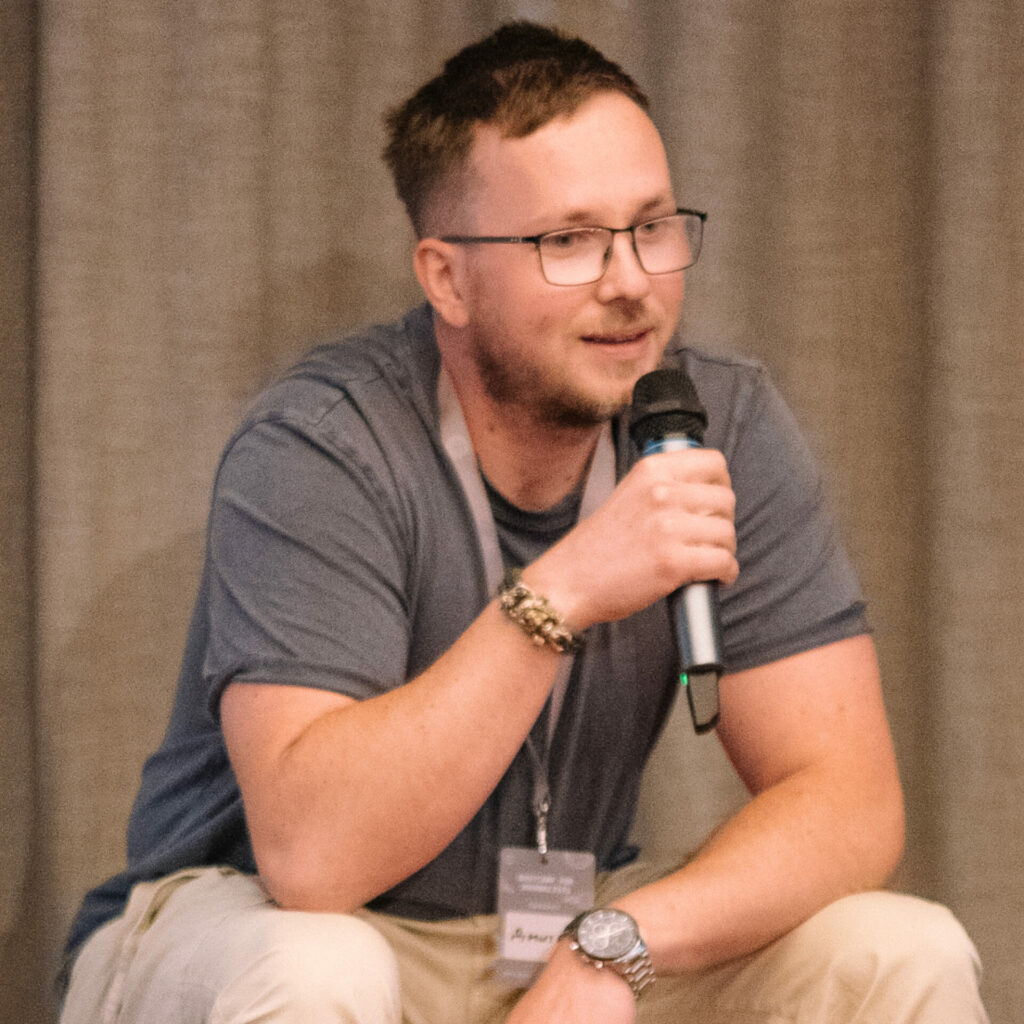
Dmytro Voloshyn, Co-founder of Creators Agency, CMO of Creators Media Group, held a workshop on “How to track trends and write about topics that really interest readers?”, during which participants actively shared their experience in the media and content creation, discussing how their approaches affect the success of materials.
Dmytro emphasised the importance of referring to primary sources when writing texts, stressing that this guarantees the accuracy of information and helps to avoid distortion. He noted that articles based on reliable facts are more likely to inspire readers’ trust and ensure a sustainable interest in the material.
Voloshyn paid special attention to the issue of choosing topics for articles. He shared his methods for finding ideas that can drive traffic to a website. One of his effective approaches is to write about topics that are not overly popular but have the potential to interest a certain audience. For example, an article on ‘Top gifts for St Nicholas’ can be successful due to its uniqueness and the lack of a large number of similar materials in the media space.
Dmytro also gave some tips on how to find ideas for writing when your creative potential seems to be exhausted. He recommends using search engines and analysing the most popular queries using keywords. This not only helps to understand what topics people are interested in at the moment, but can also become a source of inspiration for creating new materials.
Introduction to data journalism
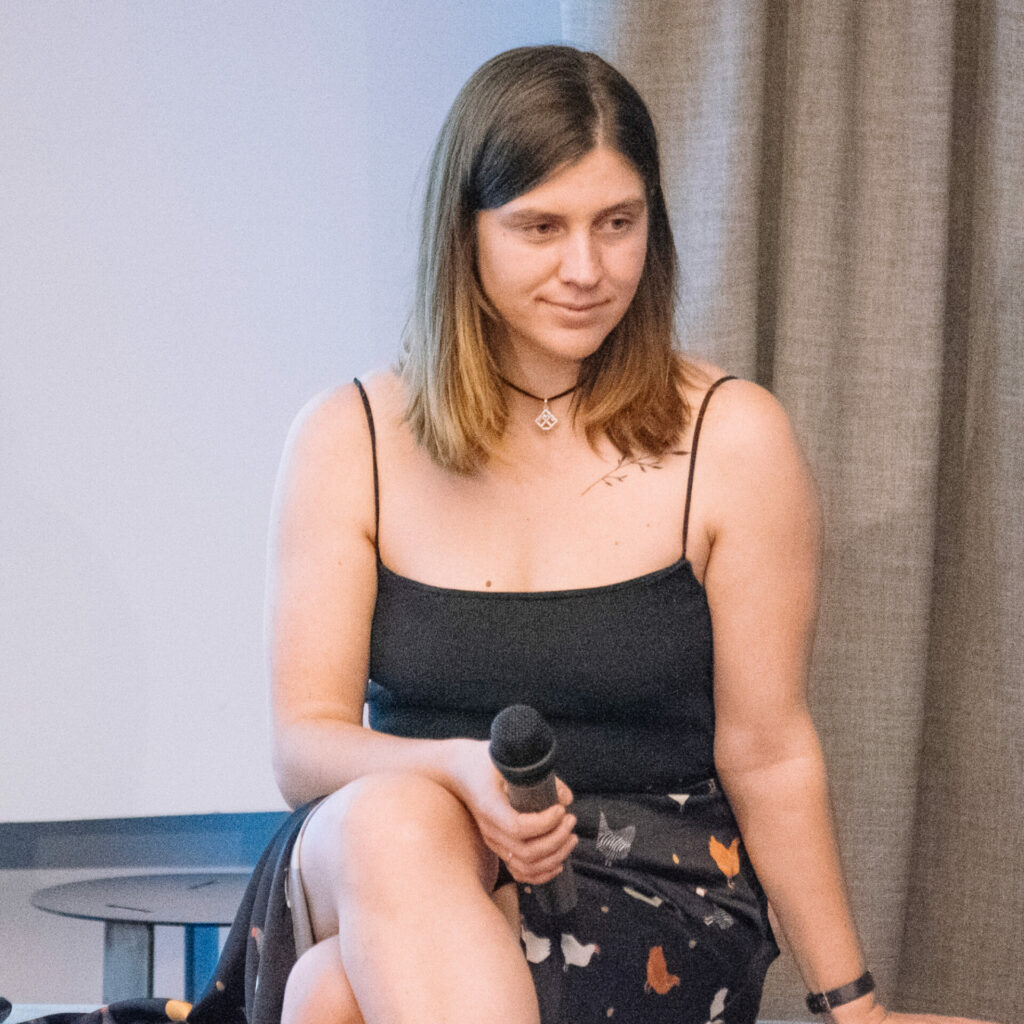
Daryna Danylenko, Communications Director at Opendatabot, gave a lecture on Introduction to Data Journalism, where she shared the basics of working with data and its application in the media. Daryna emphasised that the first step in data journalism is to identify a topic that will be interesting and relevant to the audience. She noticed that working with data is only worthwhile if you have a clear understanding of what you want to write about and how it can be useful or important for readers.
Daryna noted that choosing the right topic is fundamental to successful work with data. She highlited that data journalism should not be based on numbers alone – it should answer questions that the audience cares about. Working with data requires careful analysis and selection of the data sets that best illustrate the chosen topic.
To consolidate the material, Daria offered the participants practical tasks aimed at developing their skills in working with open data and analysing it. Participants had the opportunity to work with real data sets and try to create information materials based on facts and figures.
The two-day bootcamp for journalists culminated in the awarding of certificates to participants who successfully completed the course, gaining not only new knowledge but also valuable practical experience that will be an important tool in their future professional activities. This underlines the critical importance of continuous learning and practical application of skills in data journalism.

